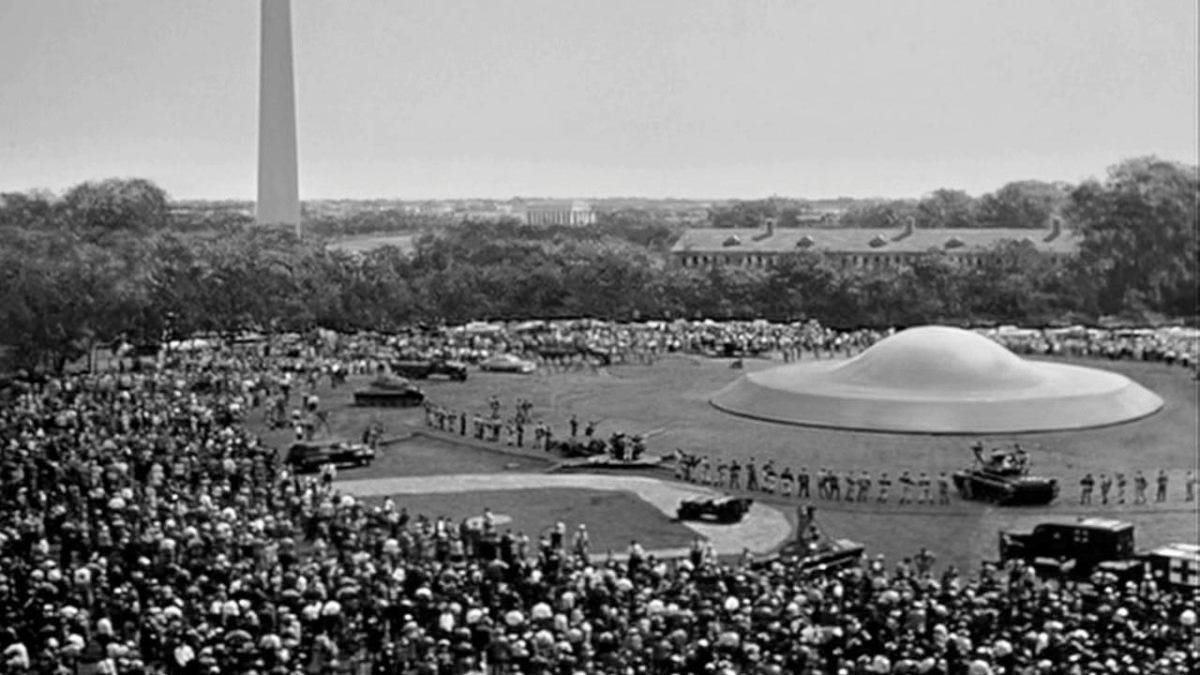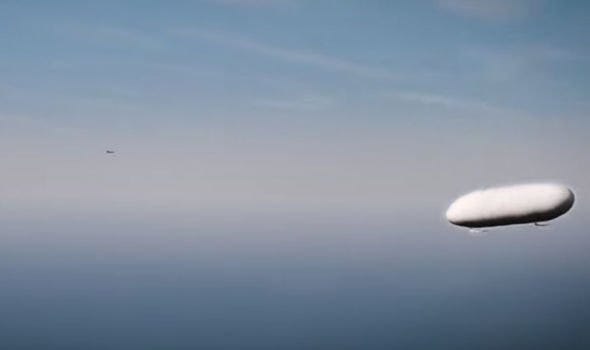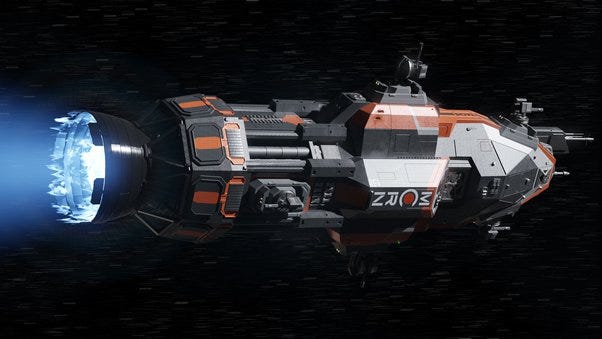👽 Why Congress' big UFO hearing made me more positive about faster human progress
If the truth isn't out there, maybe we've made some pretty amazing advances right here
The 1951 science-fiction classic The Day the Earth Stood Still begins with a flying saucer landing on the National Mall, just south of the White House. Last week’s House hearing on “unexplained aerial phenomena” — the first such hearing in more than a half-century — was a far less cinematic and shocking event in Washington. Pentagon officials didn’t produce high-def, close-up video of UAPs buzzing around US Navy ships in broad daylight. They didn’t present materials from captured or crashed alien spacecraft. They didn’t play recordings of alien transmissions.
That said, it was an important hearing. Pentagon officials testified under oath that the government hadn’t collected any alien artifacts. They showed a previously classified color video of a spherical object zooming past a Navy jet. And they announced the creation of a new task force to examine UAP reports, an effort that will include tweaking military equipment sensors to record as much high-quality data as possible about these sightings. That last bit seems especially important given the 2017 revelation of a 2004 encounter between UAPs and two F/A-18F Super Hornets from the USS Nimitz, a nuclear-powered aircraft carrier, off the coast of San Diego.
A few answers but still some big questions
So where does the hearing leave us, other than with further confirmation that Washington seems to be taking UAPs more seriously? After watching the hearing, Avi Loeb, former chair of the Harvard University astronomy department, wrote that there were two possible interpretations of the objects — not tricks of light or human perception — seen in various Pentagon videos. “Either they were made by humans or they were made by extraterrestrial civilizations. In the first case, the government wishes to know which technologies are used by other nations. In the second case, scientists wish to know which technologies were developed by extraterrestrial civilizations. … Here’s hoping that the government and science will work together to determine the nature of UAP.”
For what it’s worth, the hearing didn’t seem to change the views of the Metaculus prediction community. For instance: The median community prediction for the question “Will alien technosignatures be detected before January 1, 2050?” didn’t budge from 5 percent. As for me, the UAP hearing — especially the Pentagon testimony under oath — probably nudged me a bit more into thinking these sightings have a terrestrial origin.
Another question: Why are UAPs a subject worthy of the prestigious Faster, Please! newsletter? What does the nature of these mysterious objects have to do with scientific discovery, technological invention, commercial innovation, and high-productivity economic growth?
Taking a deeper look into the US Navy and those Tic-Tac UAPs
I think the answers to those queries can be found in a detailed paper about the Nimitz incident, “A Forensic Analysis of Navy Carrier Strike Group Eleven’s Encounter with an Anomalous Aerial Vehicle.” It was presented back in 2019 to a conference organized by a group of academics, engineers, and scientists from NASA, the European Space Agency, and the North American Aerospace Defense Command, according to journalist Keith Kloor in a great new piece for Issues in Science and Technology, published by the National Academies of Sciences, Engineering, and Medicine and Arizona State University.
Again, here is what we know about the 2004 Nimitz incident. On Nov. 14 of that year, Carrier Strike Group Eleven, including the Nimitz and the USS Princeton missile cruiser, was conducting a training exercise some 100 miles off the coast of southern California when the Navy radar detected as many as 20 “anomalous aerial vehicles.” Two F/A-18F Super Hornets were ordered to intercept. Wikipedia picks up the rest of the story:
[Fight pilot] Commander David Fravor said the [radar operator on the Princeton] had been tracking unusual aircraft for two weeks prior to the incident. The aircraft would appear at 80,000 feet before descending rapidly toward the sea, and stopping at 20,000 feet and hovering. Fravor reported that he saw an object, white and oval, hovering above an ocean disturbance. He estimated that the object was about 40 feet long. Fravor and another pilot, Alex Dietrich, said in an interview that a total of four people (two pilots and two weapons systems officers in the back seats of the two airplanes) witnessed the object for about 5 minutes. Fravor says that as he spiraled down to get closer to the object, the object ascended, mirroring the trajectory of his airplane, until the object disappeared. A second wave of fighters, including pilot Lieutenant Commander Chad Underwood, took off from Nimitz to investigate. Unlike Fravor, Underwood's fighter was equipped with an advanced infrared camera (FLIR). Underwood recorded the FLIR video, and coined the description "Tic Tac" to describe the infrared image, but did not himself see any unusual object.
Now let’s set aside speculation about the origin of those objects. What I find most valuable is what the available data say about their aerial performance, both speed and acceleration.
First, there’s testimony from two experienced Navy personnel who observed the radar tracks of the Tic-Tacs in real time, with objects dropping 60,000 feet in 0.78 seconds, with a starting and stopping velocity of zero.
Second, there’s testimony from two Navy pilots, one of whom said a Tic-Tac accelerated from stationary to “out of sight” within one second, while the other said it was “like a bullet shot from a rifle.”
Third, there are calculations based on object movement displayed on the FLIR video.
The results, according to the report, suggest a maximum speed of 281,520 mph with an equivalent of 12,823 g-forces and minimum speed of 35,280 mph and a minimum constant acceleration equivalent to 803 g-forces. The report continues (bold by me):
These numbers are nonsensical to any known aircraft. … It is worth discussing that if the object(s) had been traveling at the speeds calculated then there should have been other characteristics observed that were not reported. There was never an indication of noise from the sound barrier being broken. Even more unusual is that the resulting friction from the speeds obtained in the atmosphere should have created an intense fireball and destructive shock-wave as the object moved through the sky. None of the four pilots that witnessed the object’s sudden acceleration reported any heating that would be expected at the speeds noted in … this paper. The only comment associated with heat came from one of the pilots who stated that the air around the object had a wavy appearance similar to what is seen on a road during a hot summer day.
Indeed, the whole thing does seem nonsensical. But perhaps more sense could be made with more data, including the actual radar data, complete and original targeting video, and full communication logs — all of which might well exist. In the day after the event, “as reported by three witnesses interviewed by our team, the communication logs, the radar data, and other associated electronic information was removed from the USS Princeton and a copy of the video from the USS Nimitz.”
Does the Pentagon want us to believe … disinformation?
That’s the bit that really stands out to Kloor, who notes the Pentagon in the past has seemed content with UFO conspiracy theories shrouding secret activities, including the Roswell incident (which now seems to have been a balloon program to monitor sonic booms from Soviet nuclear tests) and early flights of the F-117 Nighthawk stealth attack aircraft, whose maiden flight took place at Area 51 in 1981 but wasn’t revealed to the public until 1988. Kloor (bold by me):
As one might expect, an online army of eyes with many years of aviation and aerospace experience have minutely examined the videos. The crowdsourcing consensus, helpfully compiled into a detailed rundown of the incident at a popular skeptic’s blog, is that the “anomalous phenomena” — are more likely explained as sightings of some sort of classified missile or aircraft, perhaps a drone, being tested at the time. That would make sense given the mysterious scrubbing of electronic data relating to the 2004 incident, as reported by various crew members on the Nimitz and Princeton. Perhaps the aerial phenomena … can instead be chalked up to a familiar cause of UFO sightings over the past seven decades — advanced military aircraft and weaponry that the Pentagon is trying to keep secret.
The sci-fi enthusiast in me — the one who loves the scene in Star Trek: First Contact showing the first meeting between humans and Vulcans — would prefer it to be aliens. But I also know there’s a chance a first meeting could go poorly. There’s been considerable controversy about active messaging effort to extraterrestrial intelligence. As physicist Stephen Hawking once said, "If aliens visit us, the outcome would be much as when Columbus landed in America, which didn't turn out well for the Native American." So maybe it’s better to keep a low profile.
A “global wealth injection” from alien tech
Then again, perhaps first contact would bring us, as the Financial Times has speculated, “the opportunity to benefit from superior technologies and knowledge sharing, such as the chance to obtain zero-gravity or ‘free energy systems,’ [which] would be tantamount to a global wealth injection.”
I’d sure like to think so. Yet even a close encounter of the second kind, where we have hard proof of alien existence but no meaningful contact, would show humanity that we’re nowhere close to our potential — and perhaps renew our interest in maximizing that potential.
But maybe it’s not aliens, maybe it’s just us. And if that’s the case, I feel a lot better about my techno-optimist, Up Wing world view. Imagine if America really possesses vehicles that can travel multiples of the fastest hypersonic missile or SpaceX rocket — and do so in ways that seem physics defying. Traveling from the Earth to the Moon would be similar to a cross-country trip.
More importantly, such a space transportation system would open up the Solar System to us. In the book and television series The Expanse, it’s the accidental discovery of “fusion propulsion technology” called the Epstein Drive that allows humanity to become a multiplanetary species able to zip from Earth to the asteroid belt at a fraction of light speed. And by the way, I wonder what powers those Tic-Tacs. Whatever it is, I imagine it could also power giant carbon capture and desalination machines — or a space elevator.
Now, I’m not counting of any of this as part of my hopeful take for a New Roaring Twenties and Thrilling Thirties. For that, I’m relying on known advances in AI, biotech, energy space. But I wouldn’t mind if there were a new Epstein Drive being installed in a Tic-Tac at Area 51 right now.
Thanks for reading this far! Just a quick note for first-time visitors and free subscribers. In my twice-weekly issues for paid subscribers, I typically also include a short, sharp Q&A with an interesting thinker, in addition to a long-read essay. Here are some recent examples of those interviews:
Economist Tyler Cowen on innovation, China, talent, and Elon Musk
Existential risk expert Toby Ord on humanity’s precarious future
Silicon Valley historian Margaret O’Mara on the rise of Silicon Valley
Innovation expert Matt Ridley on rational optimism and how innovation works
More From Less author Andrew McAfee on economic growth and the environment
A Culture of Growth author and economic historian Joel Mokyr on the origins of economic growth
Physicist and The Star Builders author Arthur Turrell on the state of nuclear fusion
Economist Stan Veuger on the social and political impact of the China trade shock
AI expert Avi Goldfarb on machine learning as a general purpose technology
Researcher Alec Stapp on accelerating progress through public policy








